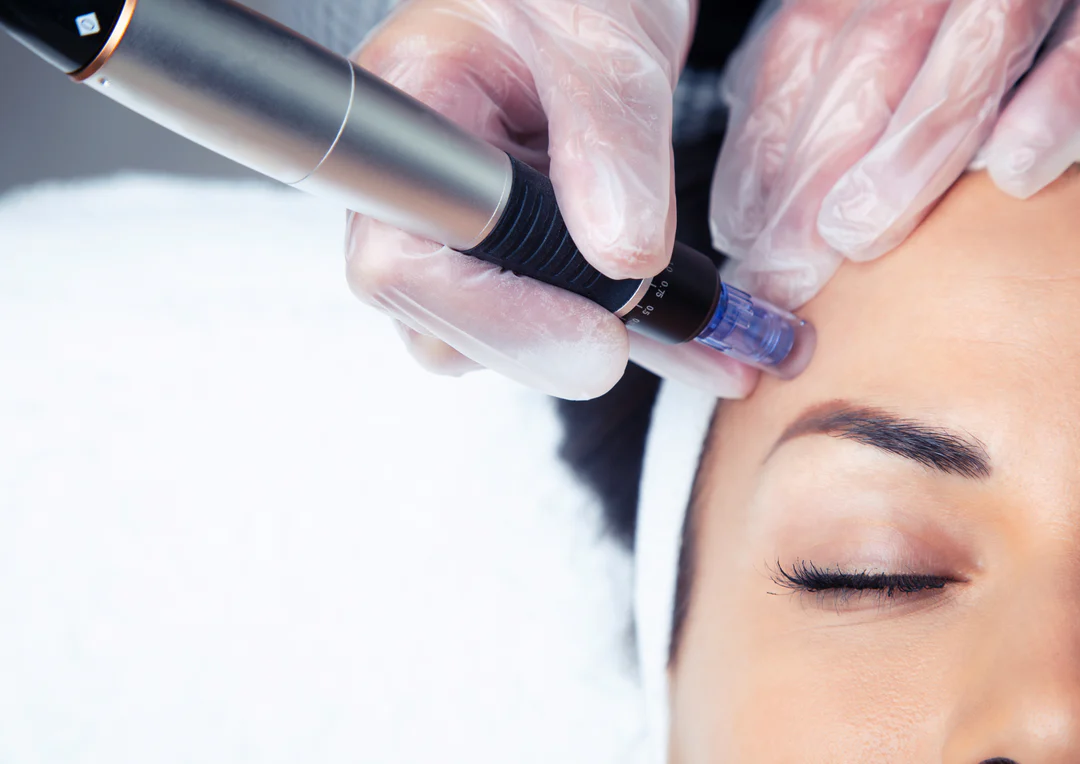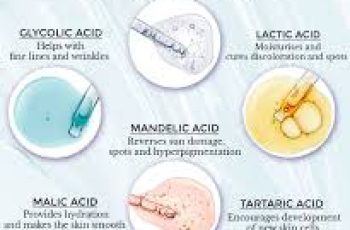While both microneedling and lactic acid are popular treatments for improving the skin’s appearance, combining them immediately after a microneedling session isn’t recommended. Let’s break down why and explore the best approach for caring for your skin post-microneedling.
What Is Microneedling?
Microneedling is a minimally invasive procedure that uses tiny, sterilized needles to create controlled micro-injuries in the skin. This stimulates collagen production, which can improve the appearance of acne scars, fine lines, wrinkles, sun damage, and other skin concerns. The process leaves the skin temporarily weakened and sensitive, so it’s important to be mindful of what you apply afterward.
What Is Lactic Acid?
Lactic acid is a type of alpha hydroxy acid (AHA) that works as a chemical exfoliant. It helps remove dead skin cells from the surface, smoothens skin texture, and brightens the complexion. It’s often praised for being one of the milder AHAs, which means it’s less likely to cause irritation compared to stronger acids like glycolic acid.
Can I Use Lactic Acid After Microneedling?
Not right away. Although lactic acid is considered a gentler exfoliant, using it immediately after microneedling can cause irritation and potential damage to the skin. After microneedling, the skin is temporarily more permeable due to the tiny punctures created by the needles. This makes it much more susceptible to any products you apply afterward, including acids like lactic acid.
Applying lactic acid too soon could result in:
Increased irritation: Since the skin is compromised post-microneedling, exfoliating acids like lactic acid can penetrate too deeply and cause inflammation, dryness, or a burning sensation.
Excessive exfoliation: Microneedling already stimulates the skin’s natural cell turnover process, so adding an exfoliant could over-exfoliate the skin, leading to redness, peeling, and potential damage to the skin barrier.
When Can You Use Acids After Microneedling?
After a microneedling session, it’s important to give your skin time to heal before introducing active ingredients like acids. Here’s a general timeline:
Wait 2-3 Days: During the first 48 to 72 hours after microneedling, avoid applying chemical exfoliants (including lactic acid, glycolic acid, or salicylic acid), as well as other potent active ingredients like retinol or vitamin C. Your skin needs time to heal, and applying these products too soon can lead to irritation, redness, and discomfort.
Post-2-3 Days: Once 2-3 days have passed and your skin has begun to heal, you can start introducing acids back into your routine. However, it’s a good idea to apply them after a hydrating serum (like hyaluronic acid) to help lock in moisture and avoid further irritation. Make sure you do a patch test first to check for sensitivity.
What Should You Use Immediately After Microneedling?
Immediately following microneedling, the skin is particularly vulnerable, so focus on hydrating and calming products. The best serum to use after microneedling is hyaluronic acid (HA).
Hyaluronic acid is a humectant, meaning it draws moisture into the skin and helps retain hydration. It can soothe the skin, prevent it from drying out, and support collagen production without causing irritation.
It’s also safe to use immediately after microneedling, as it won’t exfoliate the skin or irritate the freshly treated surface.
What Should You Avoid After Microneedling?
Here’s a list of ingredients to avoid in the first few days post-microneedling:
Retinol and retinoids: These can irritate sensitive skin and further compromise the skin barrier.
Vitamin C: While great for brightening, vitamin C can be too potent for sensitive skin post-microneedling and may cause irritation.
Exfoliating acids (AHAs and BHAs): Like lactic acid, glycolic acid, and salicylic acid, these can be too harsh immediately after microneedling and may cause more irritation than benefit.
Fragrances and essential oils: Avoid products with strong scents or essential oils, as they can trigger redness or sensitivity in freshly needled skin.
Sunscreen is a Must!
After microneedling, your skin is more vulnerable to sun damage, so it’s crucial to apply a broad-spectrum SPF 30 or higher every day, especially if you’re going outdoors. Microneedling and acids like lactic acid can increase photosensitivity, making your skin more prone to UV damage and pigmentation.
Conclusion
While lactic acid is a great exfoliant for improving skin texture and tone, avoid using it immediately after microneedling to prevent irritation and discomfort. Instead, focus on hydration and barrier repair with gentle, soothing ingredients like hyaluronic acid. After a few days, you can safely reintroduce lactic acid or other exfoliating products, but always start slowly and patch test to ensure your skin can tolerate them.
If you’re unsure about what products to use post-microneedling or have any concerns, it’s always a good idea to consult with your skincare professional or dermatologist.
DQH Knowledge drop: In your 20s, your skin cell turnover decreases. (Cell turnover is a key component in keeping your skin youthful.) You know what else slows down? Your collagen production. Starting in your 20s, collagen decreases by about 1 percent per year. Should you want to prevent fine lines and wrinkles, start by eliminating behaviors that contribute to premature aging. “If it’s bad for you, it’s bad for your skin,” says dermatologist Michel Somenek.
“Cigarette smoking reduces blood flow to the skin and causes premature wrinkling and a dull skin texture. Making the repeated pursed motion to inhale can also cause smoker’s lines. Alcohol and recreational drugs are toxins for the skin that damage its cellular structure and DNA,” Somenek tells us. “The faster you eliminate vices while you are young, the better chance your skin and body have to recuperate.” Also, adopting an anti-aging routine in your 20s is key. After all, the best offense is a good defense. We spoke to Somenek and experts Joshua Ross and Audrey Kunin to find out more.
Keep reading for the best anti-aging products for your 20s, according to skincare professionals.
Sunscreen
“We all know that the sun is the number one cause of skin aging and starting the prevention in your 20s is very important,” Ross says. “The majority of your sun damage won’t start to appear until you’re in your 30s, so don’t wait until you see it surface or you’ll be behind the curve. Stay ahead of it with a good-quality zinc-based sunscreen worn daily.”
Farmacy Green Defense Daily Mineral Sunscreen
An invisible sunscreen with SPF 30, plus botanical extracts meant to protect skin with tons of antioxidants. Bonus: It’s clean and fine to use under makeup.
Bareminerals Complexion Rescue™ Tinted Moisturizer Broad Spectrum SPF 30
Although we recommend you use your SPF and moisturizer separately, we also understand moments when you don’t have time or energy for that extra step. For those times, this bareMinerals moisturizer is a great thing to have on hand.
Vitamin C Serum
“A great introduction to anti-aging is to start with a vitamin C serum in your morning skincare routine,” Ross says. “It’s a powerful antioxidant that will neutralize free radicals and brighten the skin.” He adds that it’s a great way to counteract the effects of the sun’s harmful rays, which, as previously mentioned, are among the biggest causes of premature aging.
Drunk Elephant C-Firma™ Vitamin C Day Serum
The Drunk Elephant C-Firma is a lightweight serum that promises to give skin a glow by combining the brightening powers of vitamin C with ferulic acid, l-ascorbic acid, and vitamin E. The included sodium hyaluronate is meant to replace hydration loss, so you shouldn’t have to deal with any irritation.
Sunday Riley C.E.O. Rapid Flash Brightening Serum
This potent serum is jam-packed with vitamin C (15 percent, to be exact), which means it’s a potential superstar at both brightening skin and dousing it in antioxidants.
Peptides
Using peptides on your skin has many benefits, says Somenek. “The skin barrier is what defends the body against pollution, UV rays, bacteria, and toxins. It can be damaged by several everyday factors. Using topical peptides aids in building a stronger barrier,” he says. “Peptides comprise elastic fibers, which are a type of protein. These fibers help to make skin appear taut and firm. Peptides can also help repair damaged skin, relieve inflammation, and even out skin tone. Some peptides can kill acne-causing bacteria that is common in 20-somethings.”
Kunin agrees, saying, “Peptides are an excellent entry point for supporting collagen.” She recommends looking for face and eye treatments that contain these collagen-boosting powerhouses.
Charlotte Tilbury Magic Eye Rescue Cream
This Charlotte Tilbury super-emollient eye cream has a base of coconut oil and shea butter (read: it’s incredibly hydrating). Botanicals plus peptides are meant to help reduce dark circles and boost collagen, respectively.
This creamy moisturizer serves up potent collagen-boosting peptides and pycnogenol, and antioxidant-rich vitamin C. “Instead of sitting on top of the skin, peptides penetrate the outer layer so they go deep. The ‘signals’ they send tell the cells to produce elastin and collagen, which are needed for youthful-looking skin,” explains Somenek.
At-Home Peel Pads
Remember that skin cell turnover fiasco we talked about earlier? One way to help support it is by exfoliating. “Exfoliation is important to help keep skin fresh and luminous,” Kunin says. She recommends using at-home peel pads as an easy and effective way to exfoliate.
“The goal in your 20s is to fight the slowing pace of cell turnover. It is wise to use products that gently exfoliate, yet still remove oil and other impurities. Products that have Alpha Hydroxy Acids (AHA) or Beta Hydroxy Acids (BHA) are a good choice.”
According to Somenek, you should only exfoliate two to three times a week. “People of all ages are guilty of over-exfoliating and that can be too much of a good thing,” he says.
Dermadoctor Kakadu C Intensive Vitamin C Peel Pad
A few swipes of this Derma Doctor powerful peel pad promise to leave your skin glowing and smooth, thanks to the seven (yes, seven) types of chemical exfoliants, including AHA and BHA. It also contains vitamin C via Kakadu plum extract for added brightening and antioxidant protection.
KEY INGREDIENTS Kakadu plum extract is sourced from the Kakadu plum, a fruit grown in northern Australia. It contains vitamin C, which restores the skin’s natural barrier, increases collagen production, and soothes irritation.
Dr. Dennis Gross Skincare Alpha Beta® Universal Daily Peel Pads
These are the gold standard of peel pads, with a cult following and over 900 five-star reviews on Sephora. They’re easy to use and contain a blend of anti-aging exfoliating acids.
Emollient Night Cream
“In your 20s, you need to start upping the hydration in your skincare routine. You may have been cautious of over-moisturizing because of acne in your teens, but as you enter your 20s, your skin transitions and becomes drier,” Ross says. “I recommend an emollient night cream added into your evening skincare regimen.”
“Twenty-somethings need to make sure that they are not using creams that will clog their pores and cause excess oil production,” says Somenek. Opt for non-comedogenic products.
Cerave Skin Renewing Night Cream
One great choice is the CeraVe Skin Renewing Night Cream, which is a non-comedogenic night cream that leaves skin soft and glowy. It combines the moisturizing powers of ceramides and hyaluronic acid.
RoC Retinol Correxion Max Hydration Creme
“The best night cream ingredients contain retinol, benzoyl peroxide, and/or salicylic acid or hyaluronic acid. The goal is to moisturize, yet remove excess oil,” says Somenek. This Roc Retinol Correxion cream fits the bill as it contains both hyaluronic acid and retinol so it promises to moisturize while also being non-comedogenic.



